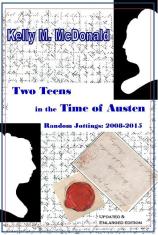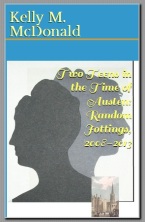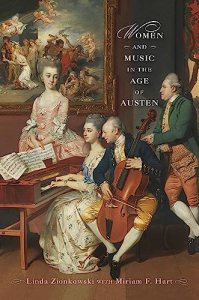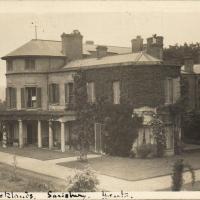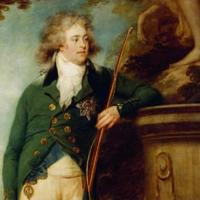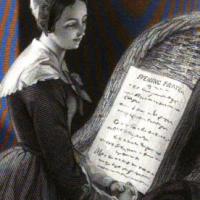For Latin, a presentation gift “by A Lady”
I have been quite enjoying a book purchased many many years ago: Grand Tours and Cook’s Tours by Lynne Withey. A few days ago, the chapter in hand discussed the mid-19th travels of English (and others) to “the playground” of Europe, Switzerland.
Now, Switzerland has a heavy presence in the Smith & Gosling world: Lord Northampton’s father and step-mother lived there in the 1780s/90s. And the 1st Marquess’ sister, Lady Frances Compton, made several lengthy trips back to a country which quite obviously tugged at her heart-strings (though she was in England more than the 6th Marquess, who wrote The History of the Comptons of Compton Wynyates, thought…). She died in Vevey, in February 1832.
So, when I found Withey mention a WOMAN author, who wrote about Switzerland in the years 1859-1860, I was intent on finding out MORE.
Withey had claimed the book published in 1861 was by “A Lady”. A very familiar appellation, for Jane Austen was initially published under the same “soubriquet”.
I found the book, online, at Archive. BUT: Looking thru the “flip book” version I didn’t even see an AUTHOR never mind the designation “A Lady”.

How odd….
I have a tendency to save books as PDFs – and yet I HATE reading them on the computer – so have a tendency NOT to read them in the end. Still: I HAVE them! And that’s what counts. Like the Withey book, some day I will pick it up.
So I clicked on PDF and was intrigued: up came a book-plate! That, too, was not shown on the flip-book.
And that SO intrigued me! But I’ll come back to that thought…
To finish my first thought: the PDF had the same title page (it’s the same book, from Lausanne), but it showed a beautiful little graphic; and curled up within the circle of leaves was the designation I had been missing: BY A LADY

In typical Library fashion, someone has penciled in a name for “A Lady”: Mrs. Henry Freshfield.
I swear, though, that this book is often ascribed to plain HENRY Freshfield. (Her first name was JANE.)
But what happened to this little graphic (compare image 1 and image 2 – same book!)??
And – (I’m long-winded today) – here comes the original idea for this post: I had thought the book had NO author designated at all. I had chuckled to myself for surmising a story, based on spotting the first book plate (there are two):

This copy of Alpine Byways, or Leaves Gathered in 1859 and 1860 had been presented to a “Mr Thomas” at Hyde House School, Winchester – for LATIN!
The joke which _I_ laughed over was: Bet young Mr Thomas didn’t realize the book was written by A WOMAN! Of course that cannot be the case (joke on ME!).
Still, what an unusual presentation gift.
Could I learn more about Hyde House School – surely in Winchester, England. It does receive, though scant, notice in an 1878 Gazetteer of the County of Hampshire as “a highly respectable private boarding school”.
Even though the “joke” cannot be sustained, this small snippet from lives lived so long ago – Mrs Freshfield, fresh from her sojourn; young Mr Thomas, whose Latin scholarship was cause for a prize – is really heartwarming.
Also missing in the flip-book is this lovely dedication page — which looks quite at home in a book authored by A Lady, and quite apropos for one with a subtitle about gathered “leaves”:

In short, though, I have never thought about pages or images not showing up. Who knew I was missing so much! For I typically judge a book at “Archive” in it’s flip-book persona.
* * *
An unrelated “Aside”
In the same Hampshire Gazetteer cited above is listed a school whose name JUMPS OUT because it’s all in caps and a bit of an oddity to a 21st century woman: The ASYLUM for FEMALE CHILDREN. It is described as,
“The ASYLUM for FEMALE CHILDREN, in St. Thomas Street, was established in 1816, for boarding, clothing, and educating 30 poor girls, after leaving the Central School, till they are fit for domestic service; but during their stay from 4s. to 5s. per week has to be paid for each of them from other charitable funds. They are generally required to be orphans, either fatherless or motherless.”
In 1815 Eliza Chute paid for Hester Wheeler‘s schooling somewhere in Winchester, which had a view “down College Street” and Kingsgate Street – and Hester sometimes spotted Caroline Wiggett’s brothers who were attending Winchester College.
Although the years do not overlap – 1815 versus 1816 – it’s hard not to wonder if this “asylum” wasn’t the school that Hester Wheeler simply could not, after a while, abide – so much so that she ran away. Eliza Chute specifies giving the girl a weekly allowance of 3 shillings and mentions that a “Miss Young” arrived to tell her that Hester had absconded (she was promptly sent back). If Hester had been enrolled in a school that expected to turn out domestics, this indeed could point up one reason why she sought to leave, despite being a highly clever girl. I recommend to readers my Academia-uploaded paper: “Uncovering the Face of Hester Wheeler“, which discusses also Colonel Brandon’s “two Elizas” in Sense and Sensibility.
